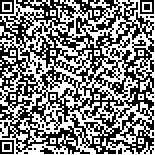| 引用本文: | 刘丽萍,陈梦,晋泽炎.UWSNs节点运动模型及预测定位[J].哈尔滨工业大学学报,2018,50(9):156.DOI:10.11918/j.issn.0367-6234.201705137 |
| LIU Liping,CHEN Meng,JIN Zeyan.Predictable localization method with mobility pattern for nodes of underwater wireless sensor networks[J].Journal of Harbin Institute of Technology,2018,50(9):156.DOI:10.11918/j.issn.0367-6234.201705137 |
|
| 摘要: |
| 为提高水下无线传感器网络(UWSNs)中动态节点的定位精度,降低通信能耗,提出采用节点的运动模型实现预测定位.考虑到近海监控网络中,潮汐运动是海水运动的主要成因,以粗略的近海潮汐运动模型为基础,以高斯径向基函数作为空间基函数构造节点的运动模型;利用K-medoids方法对模型中的高斯径向基函数中心进行聚类优化;提出了采用扩展卡尔曼滤波的方法实现模型系数的估计.考虑到普通节点与锚节点运动的空间相关性,设计了与到锚节点的距离相关的权重系数,以锚节点的运动模型系数估计普通节点运动模型中的系数,进而完成自身定位.对东经117.25°—132.2°,北纬24°—43.45°海域UWSNs的节点定位性能进行仿真分析,结果表明:所提出的节点预测定位方法的定位性能较高,定位覆盖度和定位精度高于SLMP方法和MP-PSO方法,平均通信能耗低于SLMP方法和MP-PSO方法.所提出的节点预测定位方法适用于大规模水下动态无线传感器网络定位.
|
| 关键词: 水下无线传感器网络 节点运动模型 K-medoids 扩展卡尔曼 预测定位 |
| DOI:10.11918/j.issn.0367-6234.201705137 |
| 分类号:TP393 |
| 文献标识码:A |
| 基金项目:国家自然科学基金(61104208);天津市应用基础与前沿技术研究计划青年基金(13JCQNJC00800) |
|
| Predictable localization method with mobility pattern for nodes of underwater wireless sensor networks |
|
LIU Liping,CHEN Meng,JIN Zeyan
|
|
(School of Electrical and Information Engineering, Tianjin University, Tianjin 300072, China)
|
| Abstract: |
| To improve localization accuracy and reduce communication energy for mobile nodes of underwater wireless sensor networks (UWSNs), the localization prediction method with mobility pattern for nodes was proposed. Considering that tidal motion is the main factor to generate movement of sea water in seashore monitoring network, Gauss radial basis function was exploited as the spatial basis function to construct the node mobility pattern. Then K-medoids method was utilized to cluster and optimize the center of Gauss radial basis function and the extended Kalman filtering algorithm was adopted to predict model coefficients. Moreover, weight coefficients related to distance were designed based on the spatial correlation between the anchor node and ordinary node. The ordinary node estimated the model coefficients based on anchor node coefficients and weight coefficients, and achieved localization with estimated speed and last location. The simulation results of UWSNs in the region from 117.25°E to 132.2°E and from 24°N to 43.45°N showed that predictable localization method with mobility pattern for nodes of UWSNs (PLM_MP) had better performances. The localization coverage rate and the localization accuracy were higher than that in SLMP scheme and MP-PSO scheme, and the average communication cost was lower. It also showed that PLM_MP scheme is suitable for localization in large mobile underwater wireless sensor networks.
|
| Key words: underwater wireless sensor networks node mobility pattern K-medoids extended Kalman localization prediction |







